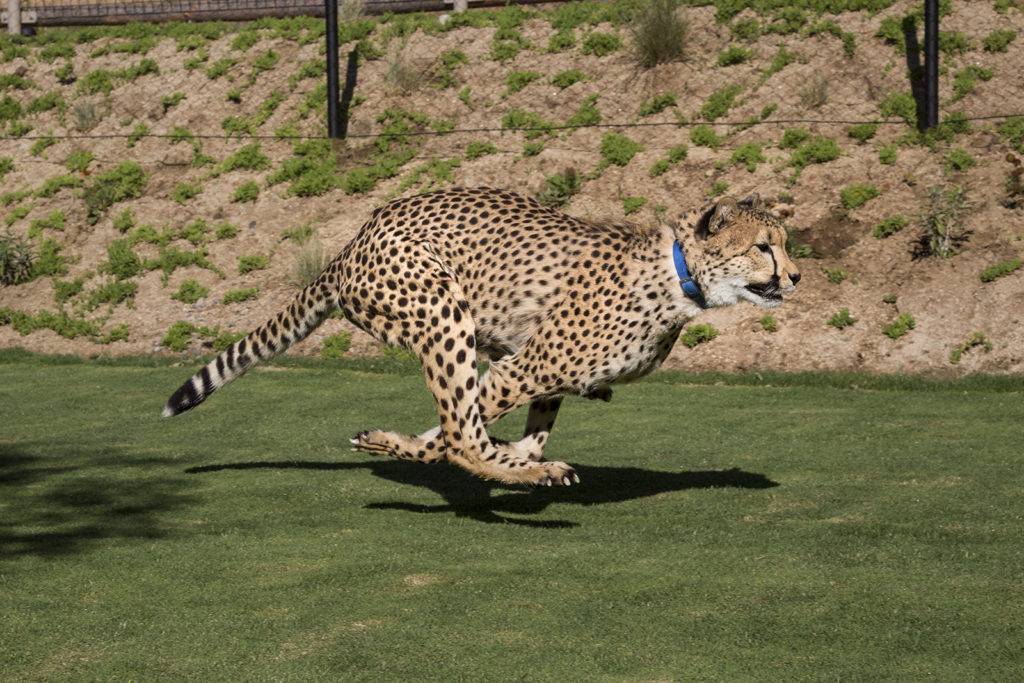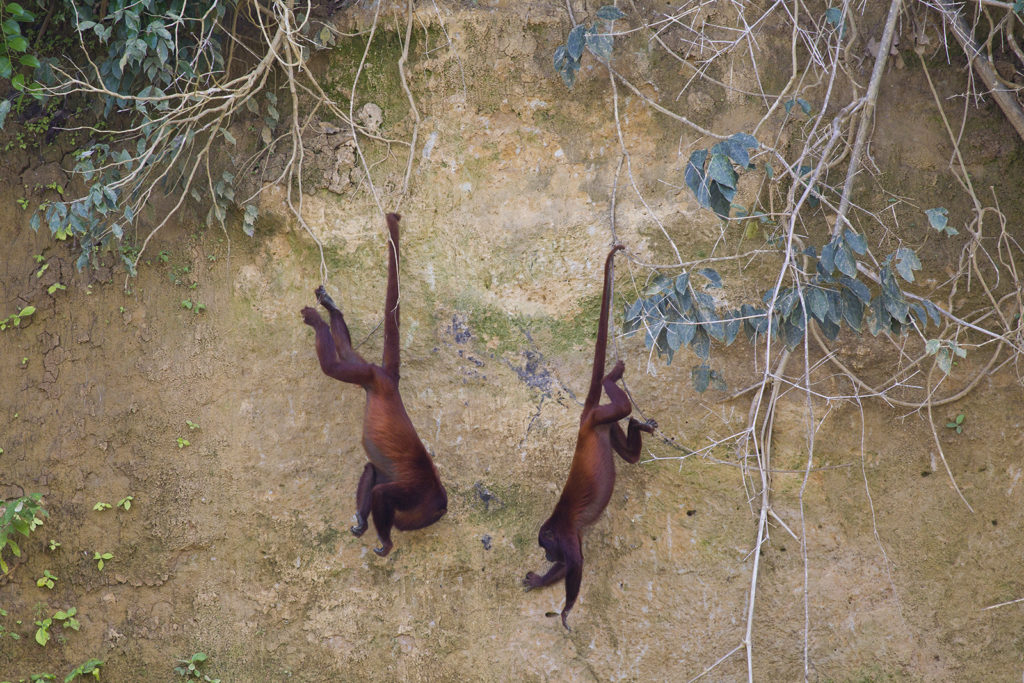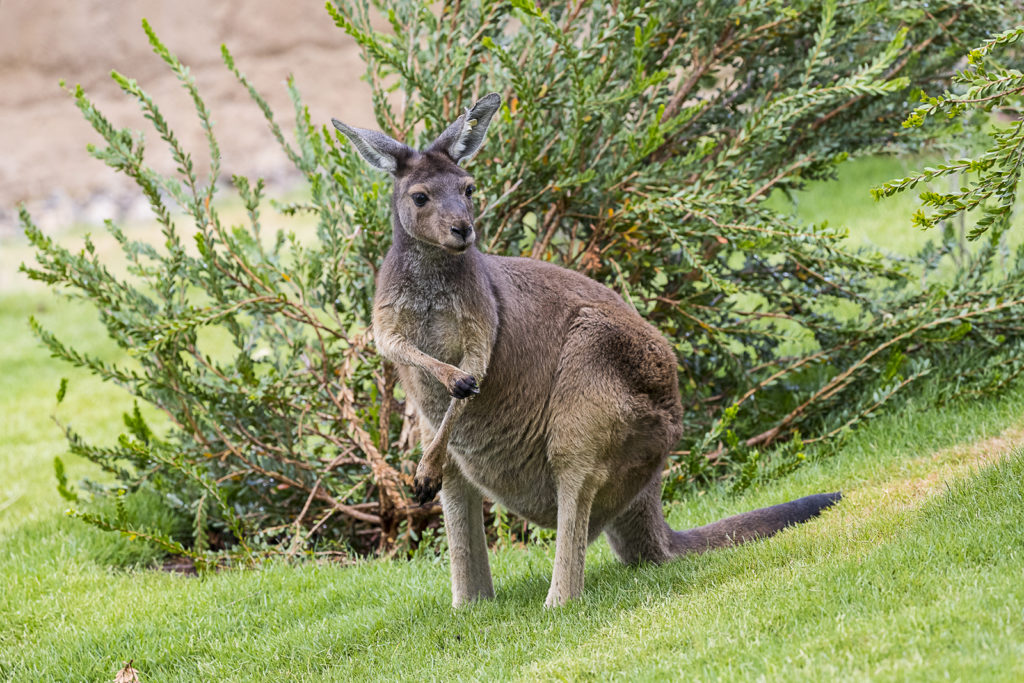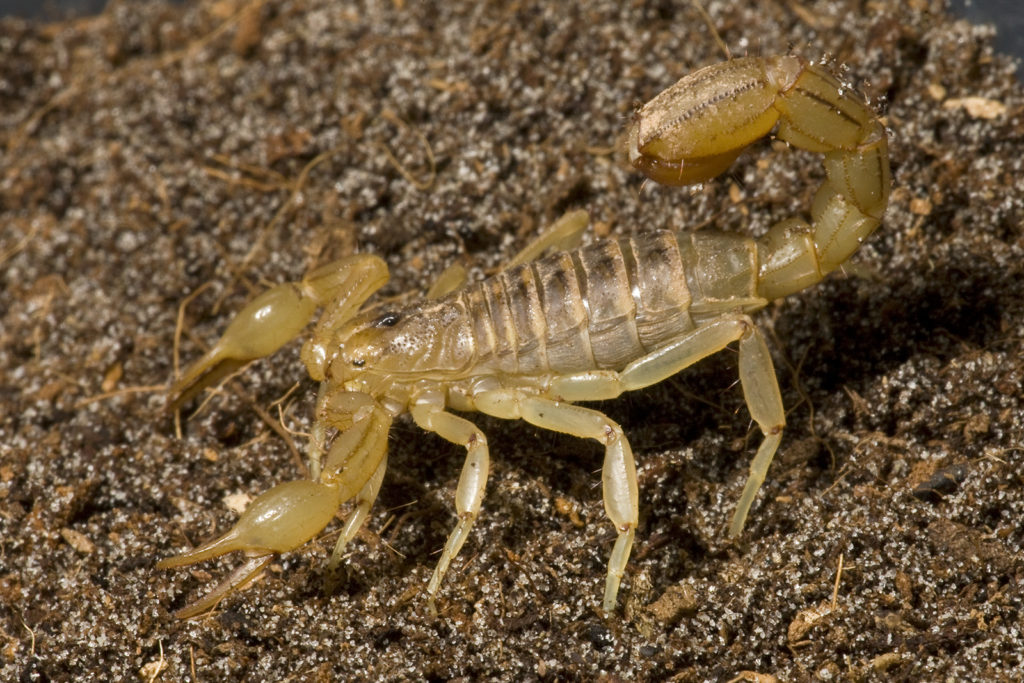
Some are curly, others are straight. Some wag, others grip. Some help with balance, others are a means of defense. When it comes to animal tails, the bottom line is, they all serve a purpose, and some even tell a tale of their own.
Balancing Act

Without their over-two-foot-long tails, cheetahs couldn’t run down prey. When they reach speeds of 50-plus miles per hour, their muscular tail acts like a rudder for balance to counteract their body weight. This prevents them from rolling over or spinning out during a high-speed chase. Most species of lemurs also rely on their tails—which are longer than their bodies—for balance as they leap from tree to tree. And it would be hard to imagine birds (except for their earth-bound brethren like emus and penguins) flying the friendly—and unfriendly—skies without their feathered guidance systems. Their tails help them steer and maneuver while flying, as well as provide stability as they take off and land. With a twist of the tail, a bird can change its direction mid-flight.
Hang On!

Some Animal Kingdom inhabitants are hands-down ahead of the rest with their tails that act like a lot like an extra hand! Prehensile tails, like those found on numerous monkey species, kinkajous, tamanduas, opossums, seahorses, and more, help the animals grip branches, stay anchored in place, and even hold food and other objects. Numerous mammals with prehensile tails have a bare patch, known as a tactile pad or friction pad, to help with gripping.
Get Going

Along with helping them stay upright, without their more than two-foot-long tails, kangaroos wouldn’t be able to get around. Their tails have more than 40 vertebrae, and propel the animal forward with as much force as its front and hind legs combined. While those tough tails do help the ’roos when they’re rocking back on their hind legs, they’re so valuable for locomotion that they could almost be considered a fifth leg. In the water, fish use their caudal fin, or tail, to help push them through the water. Their nautical neighbors, marine mammals, such as whales and dolphins, have horizontal tails; while those on fish are vertical.
Not-so-secret Weapons

When it comes to self-defense, some animals' backup is right there on their backsides. Probably the best-known tail fighter would be the scorpion. There are approximately 1,750 described species, and all sport a narrow, segmented tail that ends with a venomous stinger. Despite their fierce reputation, the vast majority do not represent a serious threat to human beings, and only about 25 species produce venom that could prove fatal to people. Sometimes the best answer to a fight is to retreat—just ask lizards. If a predator grabs hold of a lizard’s tail, this resourceful reptile can sever its own tail, allowing it to escape while the confused pursuer is left holding the bag—or tail. Some species, such as the agama lizard, use their tail as a whip-like weapon. That’s using your head—or the opposite end. And while this isn’t exactly a self-defense technique that causes injury, one of the moves practiced by certain male lemurs is as novel as it is noxious. Male ring-tailed lemurs put smells, from glands in their bottoms, on their tail and wave it at rivals. It’s known as "stink fighting"!
What’s That You Say?
The enthusiastic thump-thump-thump of a canine’s tail usually means a pup is doggone happy. See a swishing tail on a cat and you may want to make yourself scarce. Maybe the message being conveyed is helpful—some deer species flash the white underside of their tails to warn others of possible danger. Animals may be saying a lot with their tails—it’s all a matter of paying attention to what they’re trying to say.
The Long and the Short of It
When you come right down to it, tails are terrific tools. From warnings to keeping warm, these appendages make a huge different in animals’ lives. And they’re grateful—from the bottom of their, well, bottoms.
Peggy Scott is an associate editor at San Diego Zoo Global. Read her previous blog, Many, Many, Many Happy Returns.




